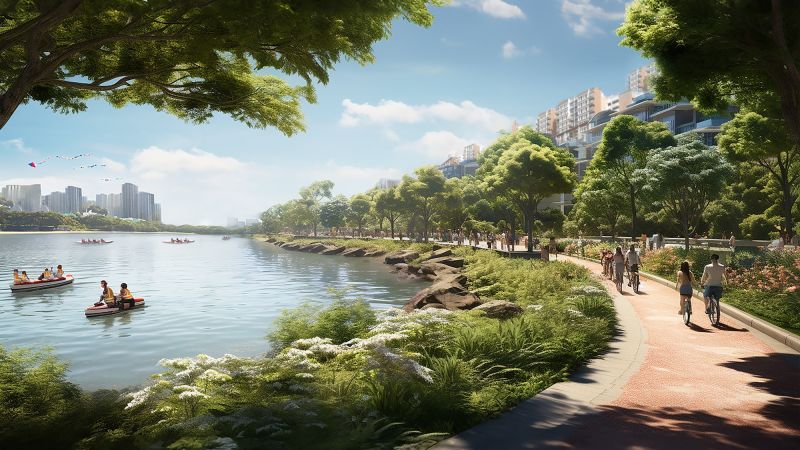Editor’s Note: Design for Impact is a series spotlighting architectural solutions for communities displaced by the climate crisis, natural disasters and other humanitarian emergencies.
Waterlogged parks, submerged underpasses and streets engulfed by knee-deep water — low-lying Singapore is no stranger to what experts call “nuisance flooding,” which, though burdensome, poses no major threat to people or property. But in a tiny island nation that prides itself on long-term planning, the recent deluges are considered a harbinger of far worse things to come.
The Southeast Asian city-state estimates that the surrounding seas could rise by 1.15 meters (3.8 feet) by the end of this century. In a “high emissions scenario,” they could climb up to 2 meters (6.6 feet) by 2150, according to the latest government projections. Combined with extreme high tides and storm surges, sea levels may sometimes exceed today’s by up to 5 meters — higher than around 30% of Singapore.
The proposed solution? An 8-mile-long string of inhabitable artificial islands that will double as a seawall protecting the 31-mile-wide country’s entire southeastern coast.
Dubbed “Long Island” — a working title, for now — the project will likely take decades and billions of dollars to complete. The plan would see around 3 square miles of land (two and a half times the size of New York’s Central Park) reclaimed from the Singapore Strait.
Continue reading the complete article on the original source



